 Hops is a household word in beer-drinking communities around the world. Beer commercials tout the benefits of aged hops, and the flavor that results from harvesting only the best female plants for brewing. Most of those commercials don’t dive into the male-female aspect of hops plants, but the truth is hops used in beer brewing and as oil is only harvested from female plants.
Hops is a household word in beer-drinking communities around the world. Beer commercials tout the benefits of aged hops, and the flavor that results from harvesting only the best female plants for brewing. Most of those commercials don’t dive into the male-female aspect of hops plants, but the truth is hops used in beer brewing and as oil is only harvested from female plants.
Hop oil has risen to the top of the list of aromatherapy oils that have the ability to deal with tuberculosis, cancer, cystitis, intestinal issues and menstrual cramping. Hop oil is harvested from the dried flower cones of the plant.
The cones have resin glands coated with a permeable membrane. Inside the glands are molecules, which include hop resin, composed of 250 chemical compounds, many of which are antioxidants. Maintaining the integrity of the hops lupulin glands is essential in order to produce quality oil that contains all the compounds necessary for beneficial medicinal results.
Nervous conditions, sleeping disorders, and digestive issues are treated using hop oil either in baths or by inhalation, but the oil can be administered using other aromatherapy methods as well. Hop oil mimics valerian root oil, and so it is used to treat anxiety, insomnia, and restlessness. Hop oil is especially effective in treating these conditions when it is combined with valerian oil.
The chemical component dimethylvinyl carbinol, found in hop oil, plays an important role in relaxing the nervous system. Women find great value in hop oil when menstrual cramping becomes a monumental mountain of discomfort that hinders daily life, and men also find relief from stomach cramps and insomnia through using hop oil.
Specific polyphenols, such as daidzein and genistein were recently detected in hop oil, but in extremely low concentrations. These polyphenols are also present in soya oil. They are phytoestrogens, which imitate the activity of the natural female hormone, oestradiol. Hop oil is one oil that may support estrogen levels during menopause and reduce uncomfortable hot flashes and other symptoms. Phytoestrogens may also offer protection against specific hormone-sensitive cancers. That’s another reason why hop oil is being recognized as a very important essential oil.
Ghent Laboratories is conducting more studies on hops and hop oil. These ongoing studies confirm slight estrogen activity, but different hop varieties display different estrogen effects. This important research is revealing more pertinent facts about hop oil and its effectiveness in regards to cancer growth. The studies do indicate that hop oil is one of the richest natural sources of estrogen. That is exciting news for men and women who are searching for natural cancer protection within the realm of essential oils.

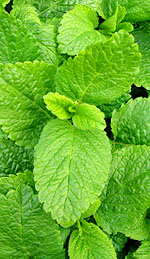 The 15th-century alchemist and physician Paracelsus called melissa “The Elixir of Life”, and it was commonly used by both the Greeks and the Romans. The Arabs used it as a special remedy because it had the ability to revive the spirit as well as the body. The ancients were well aware that wellness is rooted in both the mind and the body, something modern-day pharmaceutical remedies often overlook.
The 15th-century alchemist and physician Paracelsus called melissa “The Elixir of Life”, and it was commonly used by both the Greeks and the Romans. The Arabs used it as a special remedy because it had the ability to revive the spirit as well as the body. The ancients were well aware that wellness is rooted in both the mind and the body, something modern-day pharmaceutical remedies often overlook. Grapefruit is a youngster in the fruit world. There’s no mention of grapefruit in Roman or Greek texts, and the Chinese make no reference to the fruit either. It’s still a mystery how, when, and why a
Grapefruit is a youngster in the fruit world. There’s no mention of grapefruit in Roman or Greek texts, and the Chinese make no reference to the fruit either. It’s still a mystery how, when, and why a 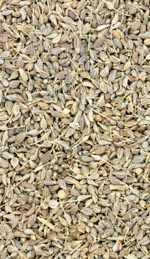 The anise seed has been an important part of the Mediterranean diet for centuries. The Egyptians and the Greeks used anise as a spice and as a medicine long before the Spanish, and the Chinese were aware of the antiseptic, antispasmodic, digestive, diuretic, and stimulating qualities of
The anise seed has been an important part of the Mediterranean diet for centuries. The Egyptians and the Greeks used anise as a spice and as a medicine long before the Spanish, and the Chinese were aware of the antiseptic, antispasmodic, digestive, diuretic, and stimulating qualities of  Ayurvedic medicine is a very ancient form of Indian healing which is truly impressive in its complexity and scope. Western medicine has taken a large portion of the knowledge found in this Indian wisdom, and applied it to the development of medicines and techniques that can relieve illnesses that destroy quality of life for millions of people around the world. For example, new Western studies show that sandalwood oil, especially the chemical compound a-santalol, has a dramatic impact on systolic blood pressure, skin conductance, and pulse rate.
Ayurvedic medicine is a very ancient form of Indian healing which is truly impressive in its complexity and scope. Western medicine has taken a large portion of the knowledge found in this Indian wisdom, and applied it to the development of medicines and techniques that can relieve illnesses that destroy quality of life for millions of people around the world. For example, new Western studies show that sandalwood oil, especially the chemical compound a-santalol, has a dramatic impact on systolic blood pressure, skin conductance, and pulse rate.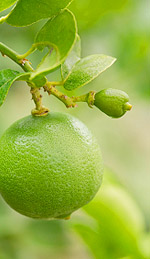 Limes are native to Asia, but many warm countries around the world grow limes in modern times. For example, Italy has been harvesting limes for hundreds of years, and the lime tree is even a part of Greek myth! Lime trees usually grow next to oak trees, so when the Greek gods transformed Philemon into an oak tree and Baucis into a lime tree (tilia tree) so they could live side-by-side for eternity, the lime was immortalized in Greek mythology.
Limes are native to Asia, but many warm countries around the world grow limes in modern times. For example, Italy has been harvesting limes for hundreds of years, and the lime tree is even a part of Greek myth! Lime trees usually grow next to oak trees, so when the Greek gods transformed Philemon into an oak tree and Baucis into a lime tree (tilia tree) so they could live side-by-side for eternity, the lime was immortalized in Greek mythology.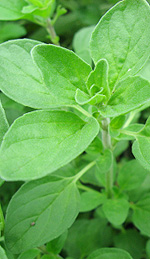 The Greeks fell in love with
The Greeks fell in love with 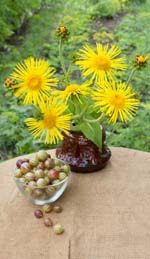 The Egyptians fell in love with the spikenard plant thousands of years ago. The oil from the plant was used to anoint powerful individuals because of its reputation as a powerful healer. The oil was also known for its spiritual properties, as well as for its ability to relax the mind and allow for a higher level of awareness.
The Egyptians fell in love with the spikenard plant thousands of years ago. The oil from the plant was used to anoint powerful individuals because of its reputation as a powerful healer. The oil was also known for its spiritual properties, as well as for its ability to relax the mind and allow for a higher level of awareness. The Egyptians made sarcophagi from cypress, the Phoenicians and the Cretans used it to build houses and ships, and the Greeks used it to carve statues of their gods. The cypress tree has been an integral part of Western civilization for centuries. The tree is named after the Greek island of Cyprus, on which cypress trees grow in abundance, and where they were worshipped.
The Egyptians made sarcophagi from cypress, the Phoenicians and the Cretans used it to build houses and ships, and the Greeks used it to carve statues of their gods. The cypress tree has been an integral part of Western civilization for centuries. The tree is named after the Greek island of Cyprus, on which cypress trees grow in abundance, and where they were worshipped. Thyme oil has a long and fascinating history of use. The Egyptians would never have been able to embalm their departed loved ones so successfully if it weren’t for thyme oil. The early Romans identified
Thyme oil has a long and fascinating history of use. The Egyptians would never have been able to embalm their departed loved ones so successfully if it weren’t for thyme oil. The early Romans identified